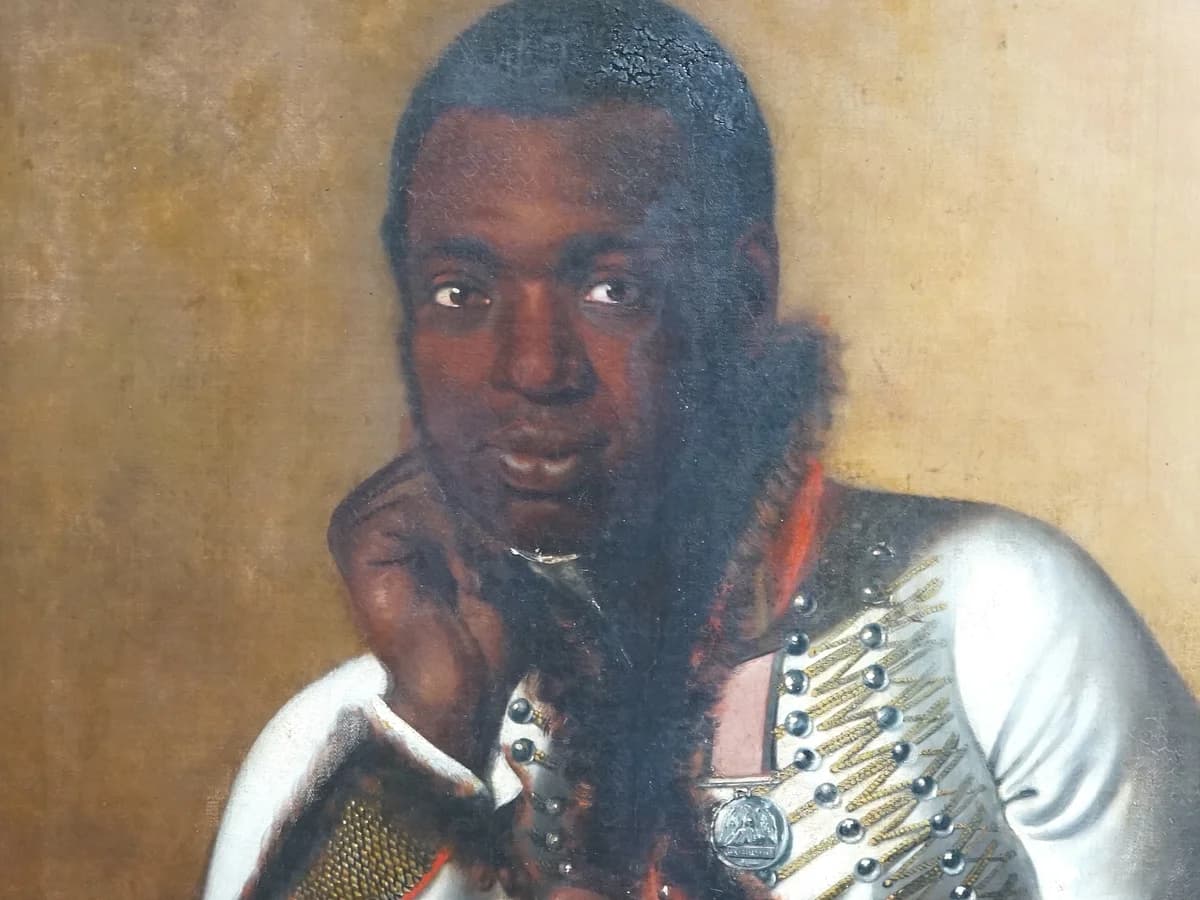Loading News Article...
We're loading the full news article for you. This includes the article content, images, author information, and related articles.
We're loading the full news article for you. This includes the article content, images, author information, and related articles.
A newly identified portrait at London's National Army Museum sheds light on Private Thomas James, a Black soldier who fought in the Napoleonic Wars and was among the few to receive the prestigious Waterloo Medal, challenging historical narratives.

A painting from 1821, long held in the archives of the National Army Museum in London, has been identified as a portrait of Private Thomas James, a Black veteran of the Napoleonic Wars. This discovery brings to light the story of a man who was among only nine Black soldiers known to have received the Waterloo Medal, the first British medal awarded irrespective of rank. The portrait, attributed to artist Thomas Phillips, will be permanently displayed at the museum's 'Army at Home' gallery, aiming to highlight the significant, yet often overlooked, contributions of Black soldiers during this period.
Anna Lavelle, the museum's art curator, emphasised the importance of this revelation, stating that a misconception exists regarding the presence of Black soldiers at Waterloo. She noted that James's story, and those of many other Black soldiers, has largely been absent from historical discourse. Lavelle underscored that James's bravery and willingness to risk his life for his regiment deserve greater recognition.
Thomas James, an illiterate percussionist in the 18th Light Dragoons, was likely born into enslavement in Montserrat, West Indies, around 1789. By 1809, he had made his way to Sussex, where slavery had been abolished, and enlisted in the army, identifying himself as a 'servant'. His service in the Napoleonic Wars, particularly his receipt of the Waterloo Medal, places him within a broader, often unacknowledged, history of Black individuals in the British military.
Historically, options for Black men in Georgian England were limited. Many who sought alternatives to servitude, like James, joined the army as military musicians. Black soldiers in the British Army wore the same uniforms and received equal pay and pensions as their white counterparts. Regimental bands actively sought Black bandsmen, creating small communities of soldiers of colour within the army, and many Black soldiers frequently re-enlisted when their regiments disbanded.
While the identification of Thomas James is a significant step, much of his early life remains unknown. The exact circumstances of his journey from Montserrat to Sussex and his experiences before enlisting in the army are not fully documented. The commissioning of the portrait itself is also a point of interest; it is believed that officers likely commissioned it to celebrate James's courage, as such an expense would have been beyond a private soldier's means.
The portrait of Private Thomas James was unveiled to the public on Tuesday, October 21, 2025, at the National Army Museum in London. Its permanent display aims to foster a more inclusive understanding of British military history.
The unveiling of this portrait is part of a broader effort by institutions like the National Army Museum to re-evaluate and highlight the diverse contributions to historical events. Kenyans and others interested in colonial histories and the often-untold stories of Black individuals in global conflicts should watch for further research and exhibitions that continue to bring these narratives to the forefront. This initiative could inspire similar efforts to uncover and celebrate the contributions of African soldiers in various historical contexts.
Keep the conversation in one place—threads here stay linked to the story and in the forums.
Other hot threads
E-sports and Gaming Community in Kenya
Active 6 months ago
Popular Recreational Activities Across Counties
Active 6 months ago
The Role of Technology in Modern Agriculture (AgriTech)
Active 6 months ago
Investing in Youth Sports Development Programs
Active 6 months ago